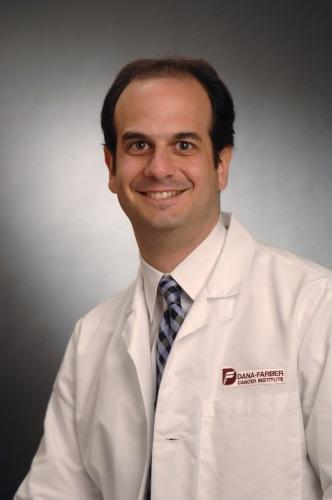Donor stem cell transplant shown to improve survival in older patients with myelodysplastic syndrome
A new clinical trial offers the most compelling evidence to date that a donor stem cell transplant can improve survival rates for older patients with higher-risk myelodysplastic syndrome (MDS), Dana-Farber Cancer Institute investigators report at the virtual 62nd American Society of Hematology (ASH) Annual Meeting.
Despite being the only current cure for MDS and widely used for younger patients, transplant generally hasn’t been offered to older patients because it has not been proven beneficial in that population. The new trial, conducted by the Blood and Marrow Transplant Clinical Trials Network, is likely to change that, according to study leaders. Involving 384 patients at 34 medical centers across the U.S., the trial found that transplantation of hematopoietic stem cells from compatible donors nearly doubled the survival rate of patients age 50-75.
“Transplantation has been underutilized, historically, in this patient group,” said study senior author Corey Cutler, MD, MPH, FRCPC, of Dana-Farber. “Based on our findings all patients should at least be referred to a transplant center so that those who are eligible and have a suitable donor can undergo transplant and have better survival. It is important to refer these patients early so the transplant center can work on finding an optimal donor right from the get-go.”
MDS encompasses a group of disorders in which blood-forming cells in the bone marrow become abnormal, resulting in the production of defective blood cells. In about one in three patients, MDS can progress to acute myeloid leukemia, a rapidly growing cancer of bone marrow cells.
Allogeneic hematopoietic stem cell transplantation replaces a patient’s abnormal blood-forming stem cells with healthy ones from a compatible donor. Because the procedure hadn’t been proven to be helpful for older patients, it hasn’t been covered by Medicare for people over age 65 unless done as part of an approved study. Medicare approved the design of the trial and is expected to consider the findings when determining future payment policies.
Participants in the new trial were referred to transplant centers, which searched for suitable stem cell donors. The 260 patients who were matched with a donor within 90 days were assigned to receive a stem cell transplant; the other 124 patients received standard supportive care.
Roughly three years after enrolling in the trial, 47.9% of those slated for transplant were alive, compared to 26.6% of those for whom no donor had been found at the 90-day mark. Survival without a recurrence of leukemia was also higher in those assigned to receive a transplant (35.8%) than in those who were not (20.6%). The researchers observed no significant differences among subgroups and no differences in quality of life between the two study arms.
Cutler will present findings on this study at the "What’s on the Horizon: Practice-Changing Clinical Trials" press briefing on Friday, Dec. 4 at 12:30 p.m. EST. Further details will be presented during Session 732, Abstract 75, on Saturday, Dec. 5 at 10:30 a.m. EST.
Cutler’s disclosures include a consulting or advisory role for Mesoblast, Generon, Medsenic, Jazz, Kadmon, and Incyte.
Complete details on Dana-Farber’s activities at ASH are available online at our American Society of Hematology (ASH) Annual Meeting page.
Media Contacts
If you are a journalist and have a question about this story, please call 617-632-4090 and ask to speak to a member of the media team, or email media@dfci.harvard.edu.
The Media Team cannot respond to patient inquiries. For more information, please see Contact Us.
